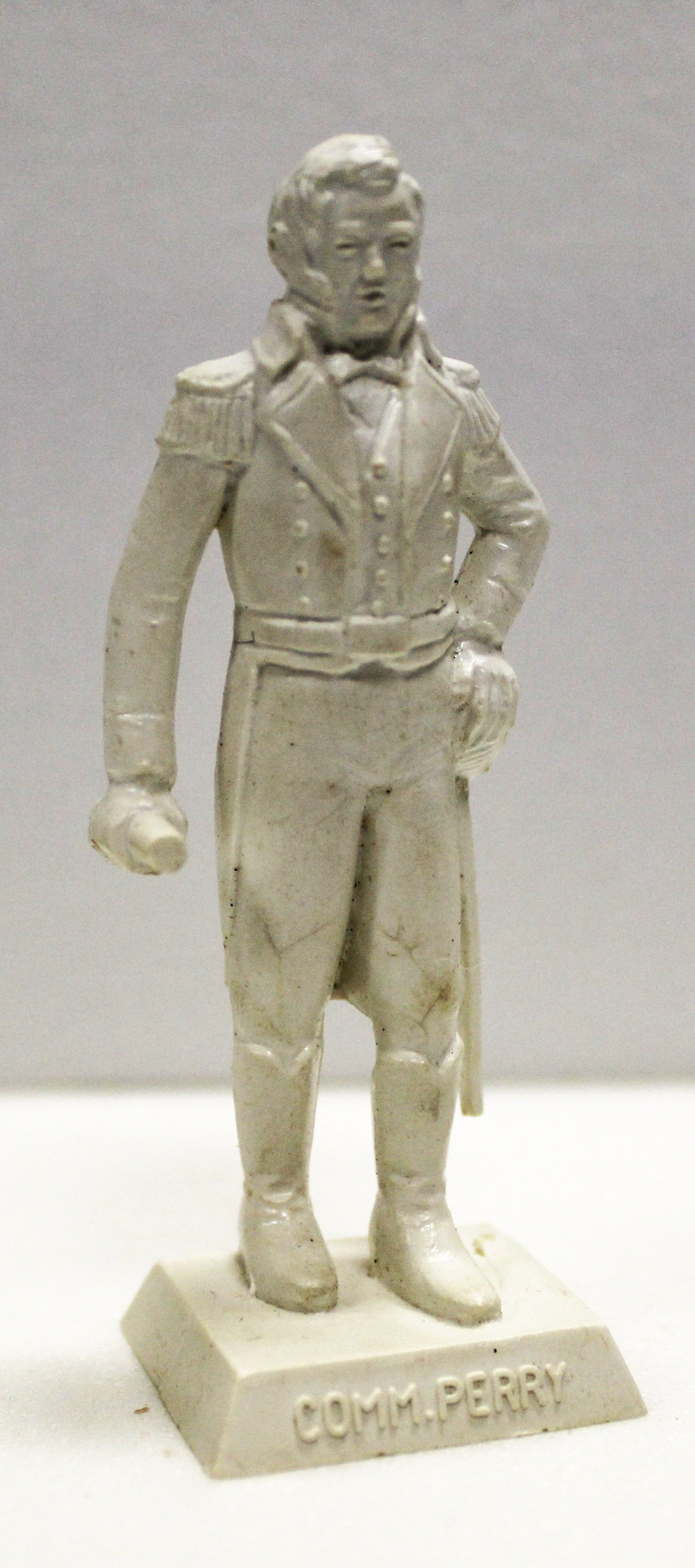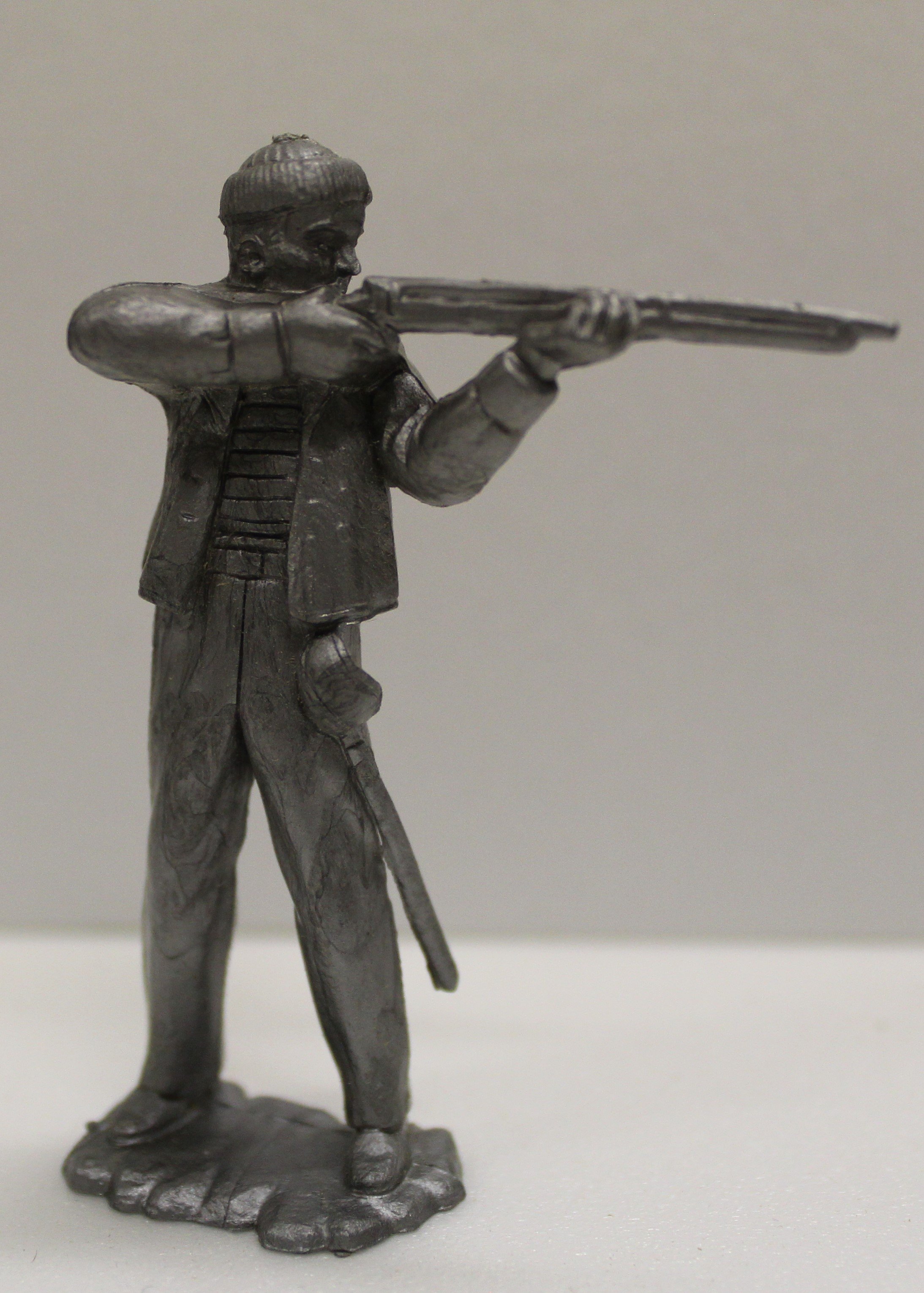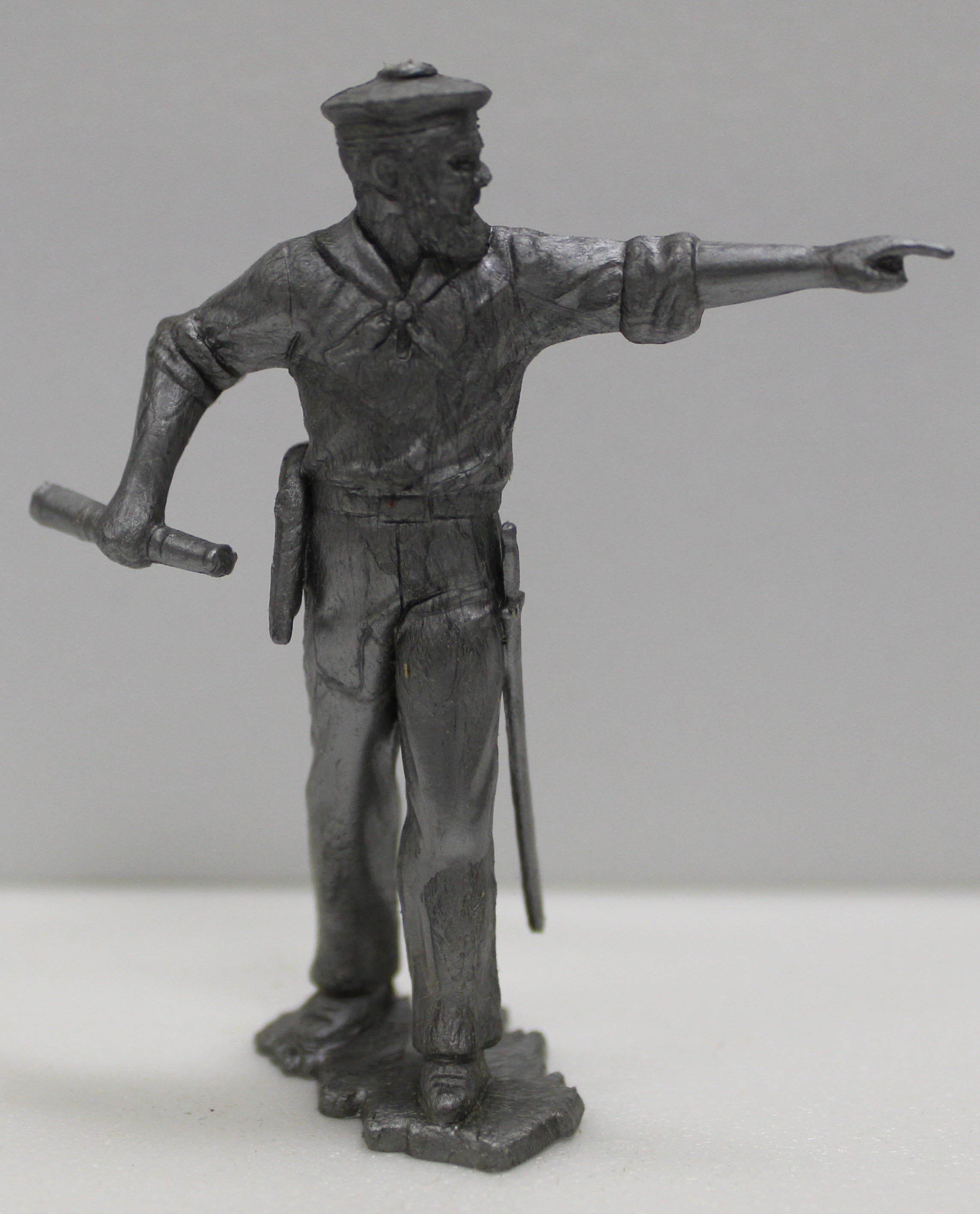Magic of the Season…
Courtesy of Time Magazine, Toymaker Louis Marx, December 12, 1955 edition
Many Erie “children” of a certain vintage still remember Christmas mornings in the late 1950s and early 1960s that almost always included a toy made by the elves at Marx Toys. With factories in both Erie and Girard (and later, Glen Dale WV), everyone knew someone who worked there, and Santa always found just the right gift, right here in Erie.
Boxed playsets were a popular choice, and Marx offered several 10- and 12-piece sets in the 1956 Sears catalogue, themed to historic figures: George Washington, General Custer, General Patton, and Colonel Teddy Roosevelt. Each “American Heroes” set cost 93 cents; buy two sets for $1.75. The location of Marx’s oldest and initially largest plant in Erie may have been the inspiration for this playset in the Erie Maritime Museum collections, Commodore Perry and War of 1812 Sailors.
Imagine opening this box on Christmas Day!
FN2021.6.1, Courtesy Stephen C. Iavarone
The set included nine plastic sailors in four different battle-ready poses, with Commodore Perry right there to lead them to victory.
Figures in the original playsets were not painted; they were the color of the material used to produce them. The War of 1812 playset features Commodore Perry in ivory, and his sailors in silver gray.
Just in case you had not yet been introduced to the Battle of Lake Erie in the classroom, your playset included a brief and remarkably well-written history of the War of 1812. By including this history, is it possible that Louis Marx also invented educational toys?!
Louis Marx, with his brother David, started his toy company in 1921. The company grew through the 1940s, with the bulk of its sales being mass-produced tin lithographed toys. In the late 1940s and early 1950s, Marx introduced plastic figures in playsets.
The figures and most accessories for these playsets were manufactured using new injection mold technique developed during World War II. A sculptor created a figure, which was used to create a metal mold. Hot plastic was poured into the mold and allowed to cool. Marx commonly used large molding machines that held 10, 20, 30, or more individual figure molds.
With playsets as its backbone, the Marx Toy Company became the largest toy company in the world by the 1950s. Marx became known as “The Toy King”, appeared on the cover of “Time” magazine, and was a close friend of President Dwight D. Eisenhower. The secret to success? Marx playsets were almost always higher quality and sold for less money than his competitors. In 1972, Marx sold the company to Quaker Oats, but competition from more cheaply made toys produced in Asia caused the brand to struggle, and in the Erie and Girard plants were closed in 1975. Quaker sold its Marx division to the British conglomerate Dunbee-Combex-Marx in 1976. The Marx brand disappeared in 1980 amidst the company’s bankruptcy. Louis Marx died in 1982, but he and his toy dynasty live on in the memory of those who remember the magic of the season.
Happy Holidays from all of us at the Erie Maritime Museum









